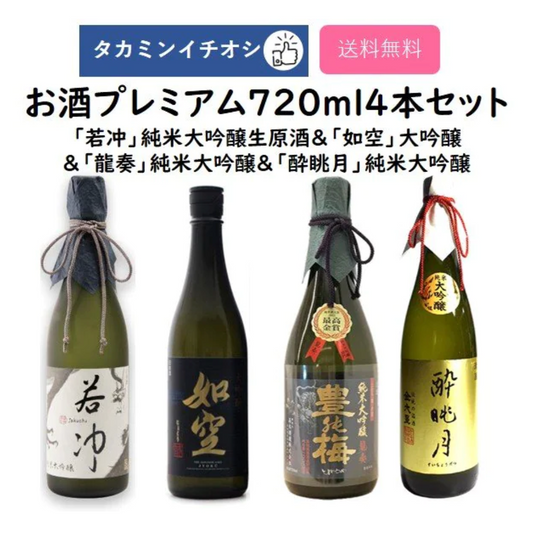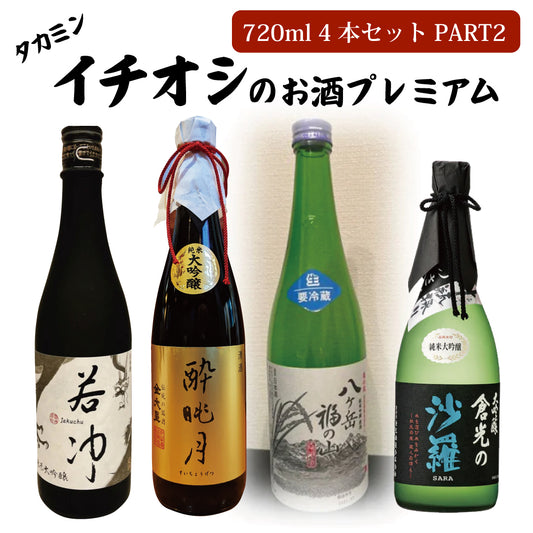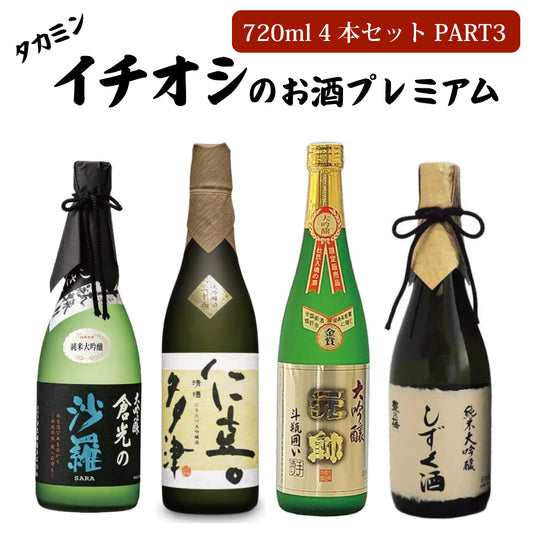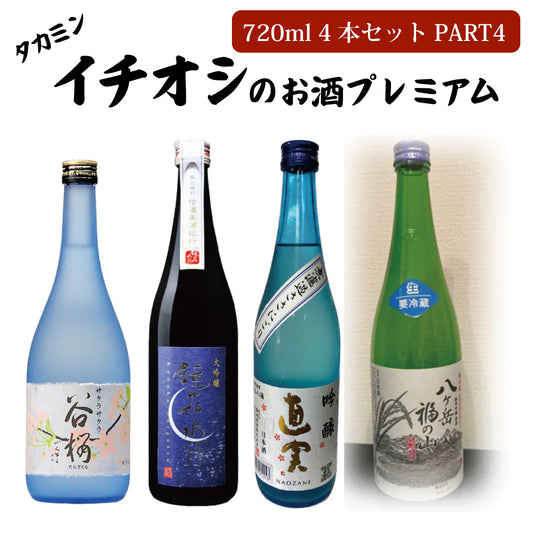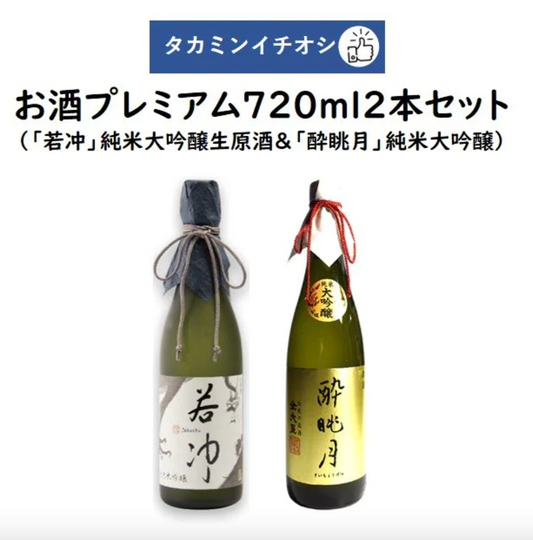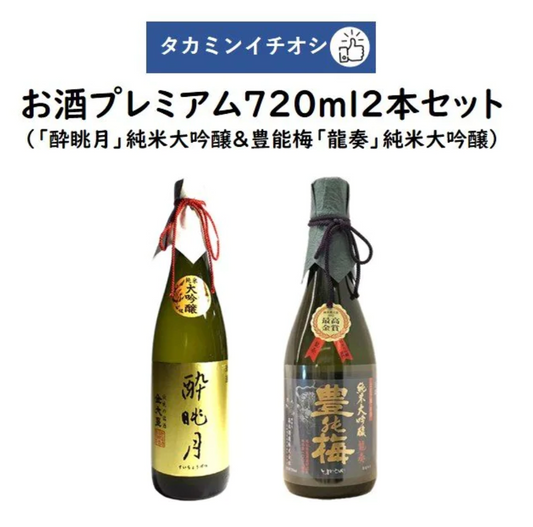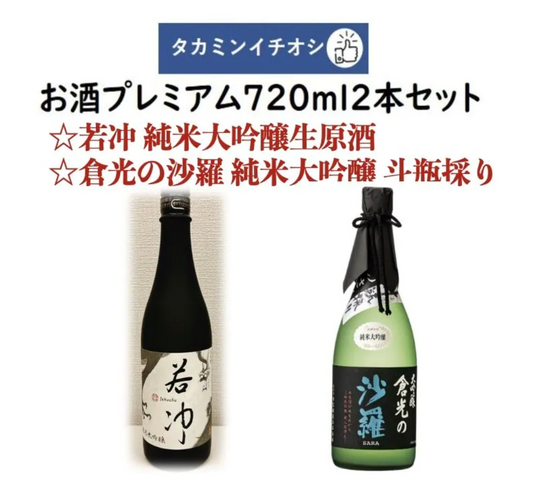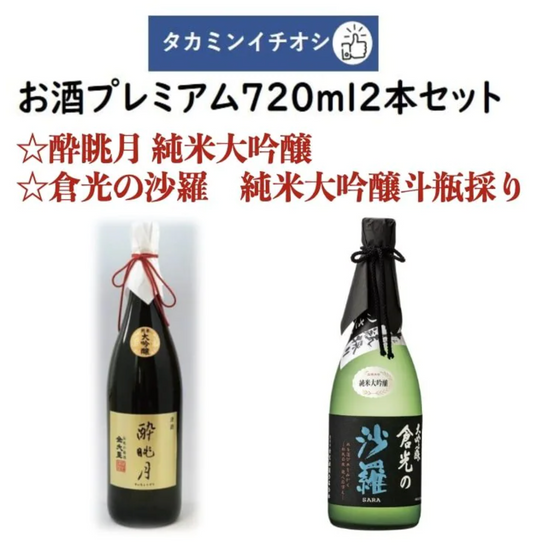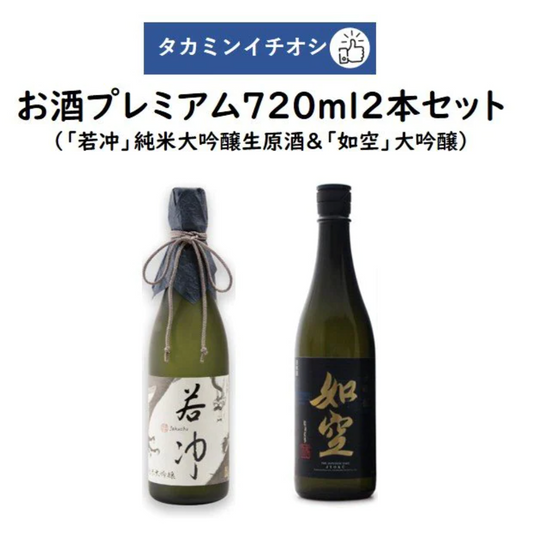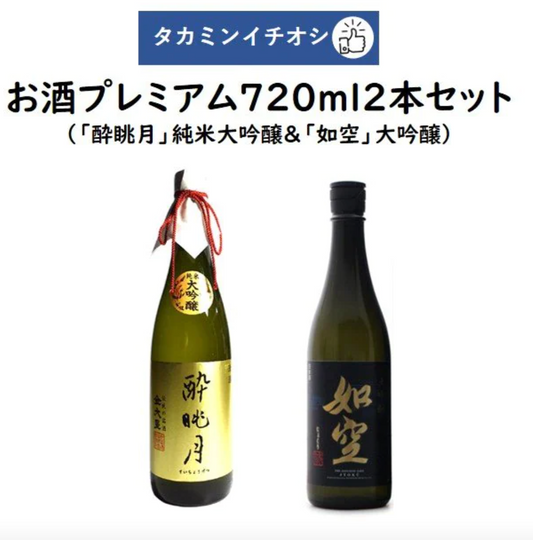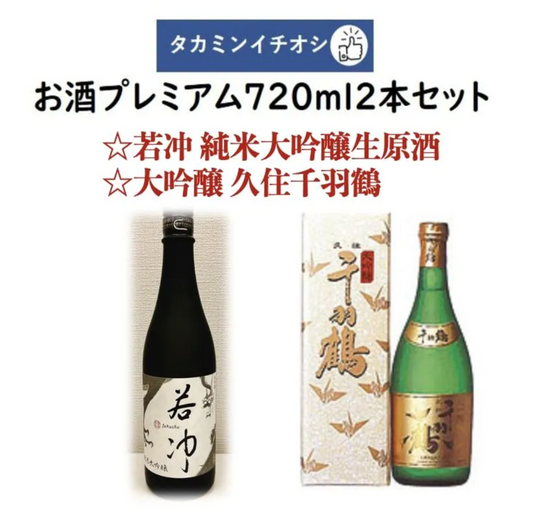Sake guide
Sake is a unique Japanese alcoholic beverage made from rice, rice malt, and water.
It is classified as brewed liquor, which is liquor made by alcoholic fermentation with yeast.
Sake is made from rice and rice malt produced in Japan, and must be produced in Japan. Therefore, imported rice or imported sake cannot be labeled as sake.
It is called ``refined sake'' in a broader sense, including sake made from overseas rice.
It is classified as brewed liquor, which is liquor made by alcoholic fermentation with yeast.
Sake is made from rice and rice malt produced in Japan, and must be produced in Japan. Therefore, imported rice or imported sake cannot be labeled as sake.
It is called ``refined sake'' in a broader sense, including sake made from overseas rice.
After removing the bran from the sake rice, the ratio of the remaining rice is called the rice-polishing ratio, and sake that uses less than 50% of that is called junmai daiginjo sake. On the other hand, Junmai Ginjo is 50-60%.This means that Junmai Ginjo Daiginjo is made closer to the center of the rice.Junmai Daiginjo is said to have a fruity aroma and a clean taste with no harsh flavors. Please drink and compare which one is better.
The process is roughly as follows.
1. Polished rice
Remove the rice bran.The percentage of remaining rice is called the rice polishing ratio.It is also written on the product page of our shop. , around 70% is common. Depending on how much the rice is shaved, the taste will be reduced and the aroma will be affected.
2. Washing and soaking rice
Then wash the rice with water to remove the bran. Soak in more water.The quality of water is also very important to the quality of sake.It is often made in land with abundant and good quality water.
3. Steamed rice (Musai), standing to cool
Steam the rice.Regulate moisture and cool to appropriate temperature.
Four. Koji making
Aspergillus oryzae is applied to the rice and placed in a koji room where the temperature and humidity are maintained to make rice koji.The rice koji is further dried.
Five. Shubo-zukuri
In shubo-zukuri, shubo is made for alcoholic fermentation.Koji, yeast, lactic acid bacteria, water, and steamed rice are mixed to culture a large amount of yeast.
6. Preparation and Moromi making
Add shubo, koji, steamed rice, and water to ferment. This fermented state is called moromi. It is important to divide this work into three times and do it slowly, and this is called "three steps preparation".
7. upper tank
Squeezing the moromi is called Joso.It is divided into sake and sake lees.Sake that is still squeezed is unblended. Nigorizake is easily filtered through a coarse cloth or strainer.
8. Filtration and pasteurization
Furthermore, the sediment is allowed to settle and filtered using a filter. After that, heat treatment is called pasteurization.
9. Storage/Preparation/Sprinkling water
You can enjoy the change in taste by storing unblended sake, hiyaoroshi, etc.Blending and watering are performed to create sake suitable for various brands.
Ten. pasteurization/bottling
Furthermore, before shipping, it is pasteurized again and stabilized.We will bottle it and deliver it to you.
1. Polished rice
Remove the rice bran.The percentage of remaining rice is called the rice polishing ratio.It is also written on the product page of our shop. , around 70% is common. Depending on how much the rice is shaved, the taste will be reduced and the aroma will be affected.
2. Washing and soaking rice
Then wash the rice with water to remove the bran. Soak in more water.The quality of water is also very important to the quality of sake.It is often made in land with abundant and good quality water.
3. Steamed rice (Musai), standing to cool
Steam the rice.Regulate moisture and cool to appropriate temperature.
Four. Koji making
Aspergillus oryzae is applied to the rice and placed in a koji room where the temperature and humidity are maintained to make rice koji.The rice koji is further dried.
Five. Shubo-zukuri
In shubo-zukuri, shubo is made for alcoholic fermentation.Koji, yeast, lactic acid bacteria, water, and steamed rice are mixed to culture a large amount of yeast.
6. Preparation and Moromi making
Add shubo, koji, steamed rice, and water to ferment. This fermented state is called moromi. It is important to divide this work into three times and do it slowly, and this is called "three steps preparation".
7. upper tank
Squeezing the moromi is called Joso.It is divided into sake and sake lees.Sake that is still squeezed is unblended. Nigorizake is easily filtered through a coarse cloth or strainer.
8. Filtration and pasteurization
Furthermore, the sediment is allowed to settle and filtered using a filter. After that, heat treatment is called pasteurization.
9. Storage/Preparation/Sprinkling water
You can enjoy the change in taste by storing unblended sake, hiyaoroshi, etc.Blending and watering are performed to create sake suitable for various brands.
Ten. pasteurization/bottling
Furthermore, before shipping, it is pasteurized again and stabilized.We will bottle it and deliver it to you.
It's the difference between brewed and distilled liquor.Sake is a brewed alcoholic beverage made by fermenting rice.Shochu is made not only from rice, but also from sweet potatoes, barley, etc., but rice shochu is made by distilling it once it has been brewed.Distillation is the process of turning a liquid into a liquid by cooling it. Therefore, the alcohol content will be higher.Sake is around 15%, but shochu is around 20-25%.
You can feel the umami and sweetness even more by making sake hot. The alcohol is also easier to feel, so the spiciness also increases.It is said that Junmai Daiginjo and genshu should not be served hot. This is because hot sake loses its gorgeous aroma.
On the other hand, junmai sake is served hot to enhance the umami of the rice, while honjozo sake has a clean, dry and refreshing taste that can be enjoyed hot.
By the way, cold means room temperature.Sake that has been chilled in a refrigerator is called cold sake.Atsukan is warmed with hot water to about 50 degrees Celsius, but nurukan is around 40 degrees Celsius.
However, the characteristics are different depending on the brand, so please try various things.
On the other hand, junmai sake is served hot to enhance the umami of the rice, while honjozo sake has a clean, dry and refreshing taste that can be enjoyed hot.
By the way, cold means room temperature.Sake that has been chilled in a refrigerator is called cold sake.Atsukan is warmed with hot water to about 50 degrees Celsius, but nurukan is around 40 degrees Celsius.
However, the characteristics are different depending on the brand, so please try various things.
Toji is the chief executive of sake brewing. The history of sake brewing dates back to ancient times. In other words, in ancient times it was a woman.
This became the term used to refer to master masters of male sake brewers.In modern times, both men and women are there.For a long time women were forbidden to enter, and even now there are few women.Traditionally, the toji formed a toji group and was a contract business, but it is increasing that the toji is also a manager who also serves as a brewery.
This became the term used to refer to master masters of male sake brewers.In modern times, both men and women are there.For a long time women were forbidden to enter, and even now there are few women.Traditionally, the toji formed a toji group and was a contract business, but it is increasing that the toji is also a manager who also serves as a brewery.
The owner, Takamin, is a sake master.
A sake sommelier is also called a sake sommelier, and is a qualification currently acquired in the sake industry.My role is to introduce the appeal of Japanese sake and have customers enjoy it.
Kikisake-shi is certified by the Federation of Sake Service Research Institutes and Sake Master Research Institutes (SSI), and is a qualified provider and seller certified by the NPO FBO.I am a professional in selling Japanese sake.
A sake sommelier is also called a sake sommelier, and is a qualification currently acquired in the sake industry.My role is to introduce the appeal of Japanese sake and have customers enjoy it.
Kikisake-shi is certified by the Federation of Sake Service Research Institutes and Sake Master Research Institutes (SSI), and is a qualified provider and seller certified by the NPO FBO.I am a professional in selling Japanese sake.
Recommended liquor set
-
Takamin Recommended Sake Premium 720ml 4 bottles set "Jakuchu" Junmai Daiginjo Sake Haraguchi Sake Brewery & "Joku" Daiginjo Hachinohe Sake & "Ryuso" Junmai Daiginjo Takagi Sake Brewery & "Suikeitsuki" Junmai Daiginjo Maruyama Sake Brewery
Regular price 27,500 YenRegular priceUnit price per -
Takamin's Best Sake Premium 720ml Set of 4 PART 2 ("Jakuchu" Junmai Daiginjo Raw Sake, "Suichogetsu" Junmai Daiginjo, "Yatsugatake Fukunoyama" Junmai Ginjo Genshu Unpasteurized Sake Making Kimoto, "Kuramitsu's" Sara” Junmai Daiginjo Tobin Collection)
Regular price 26,500 YenRegular priceUnit price per -
Takamin's Best Sake Premium 720ml 4-bottle set Part 3 ("Kuramitsu no Sara" Junmai Daiginjo Tobintori, "Nikitatsu" Daiginjoshu 35 720ml, "Gensui" Daiginjo Tobinkai, "Honoume" ” Junmai Daiginjo Shizuku Sake 2021)
Regular price 26,500 YenRegular priceUnit price per -
Takamin's Best Sake Premium 720ml Set of 4 PART 4 (Junmai Daiginjo "Sakura Sakura", "Kyoka Suigetsu" Daiginjo, "Naomi" Ginjo Unfiltered Sasanogori, "Yatsugatake Fuku no Yama" Junmai Ginjo Genshu Unpasteurized Sake Kimoto Zukuri )
Regular price 22,500 YenRegular priceUnit price per -
Takamin Recommended Sake Premium 720ml 2 bottles set "Jakuchu" Junmai Daiginjo Seigenshu Taniguchi Sake Brewery & "Suikeitsuki" Junmai Daiginjo Maruyama Sake Brewery
Regular price 13,000 YenRegular priceUnit price per -
Takamin Recommended Sake Premium 720ml 2 bottles set "Jakuchu" Junmai Daiginjo Seigenshu Taniguchi Sake Brewery & "Ryuso" Junmai Daiginjo Takagi Sake Brewery
Regular price 13,500 YenRegular priceUnit price per -
Takamin Recommended Sake Premium 720ml 2 bottles set "Drunk View Moon" Junmai Daiginjo Maruyama Sake Brewery & Toyono Ume "Ryuso" Junmai Daiginjo Takagi Sake Brewery
Regular price 11,000 YenRegular priceUnit price per -
Takamin Recommended Sake Premium 720ml 2 bottles set Jakuchu Junmai Daiginjo Raw Sake Taniguchi Sake Brewery & Kuramitsu Sara Junmai Daiginjo Tobin Hariko Kuramitsu Brewery
Regular price 14,000 YenRegular priceUnit price per -
Takamin's Best Sake Premium 720ml Set of 2 Bottles Suichogetsu Junmai Daiginjo Maruyama Brewery & Kuramitsu Sara Junmai Daiginjo Tobindori Kuramitsu Shuzo
Regular price 12,000 YenRegular priceUnit price per -
Takamin Recommended Sake Premium 720ml 2 bottles set "Jakuchu" Junmai Daiginjo Sake Hara Sake Taniguchi Sake Brewery & "Joku" Daiginjo Hachinohe Sake
Regular price 13,500 YenRegular priceUnit price per -
Takamin Recommended Sake Premium 720ml 2 bottles set "Suikeitsuki" Junmai Daiginjo Maruyama Sake Brewery & "Joku" Daiginjo Hachinohe Sake
Regular price 11,000 YenRegular priceUnit price per -
Takamin Recommended Sake Premium 720ml 2 bottles set Jakuchu Junmai Daiginjo Sake Hara Sake Taniguchi Sake Brewery & Daiginjo Kusumi Senbazuru Sato Sake Brewery
Regular price 11,500 YenRegular priceUnit price per

